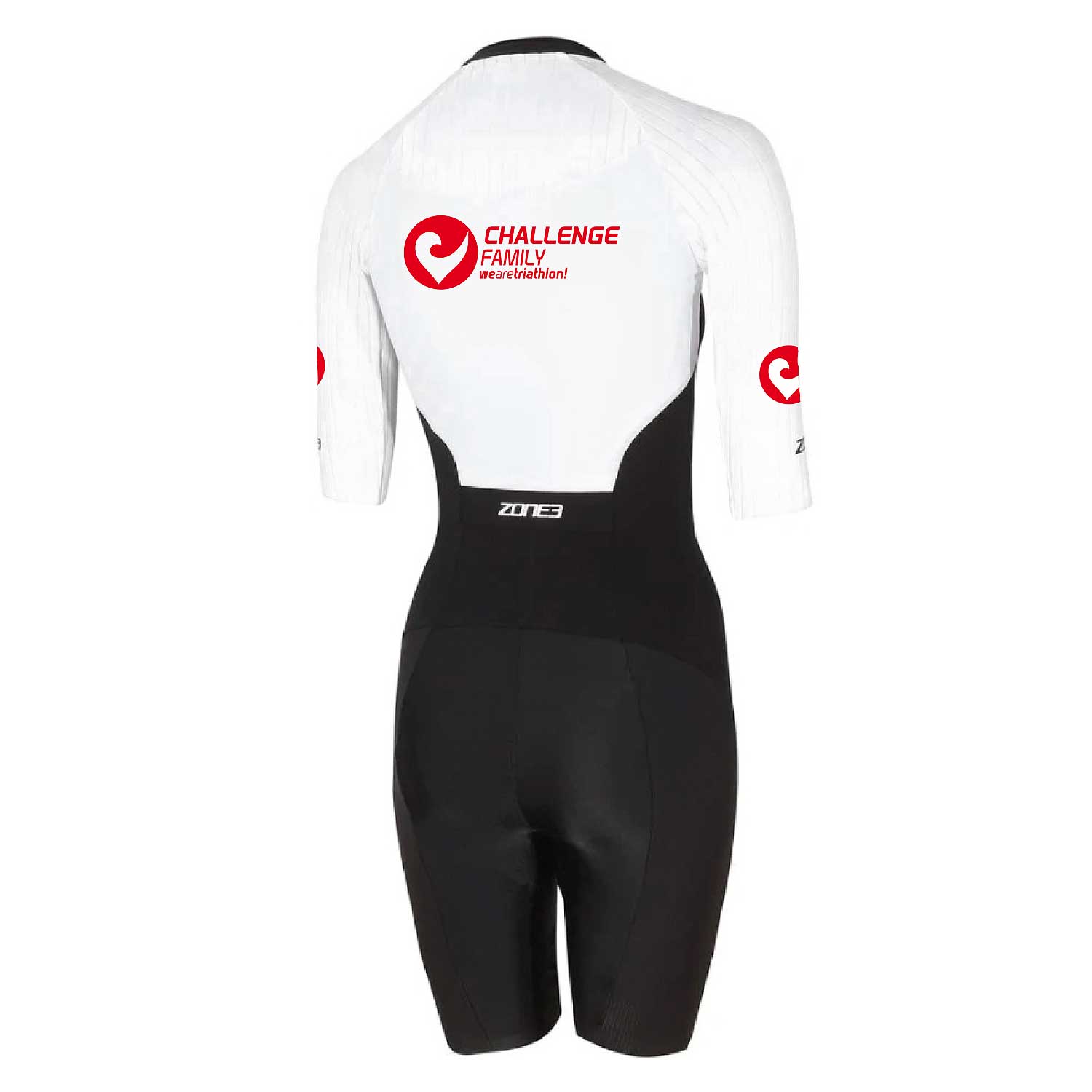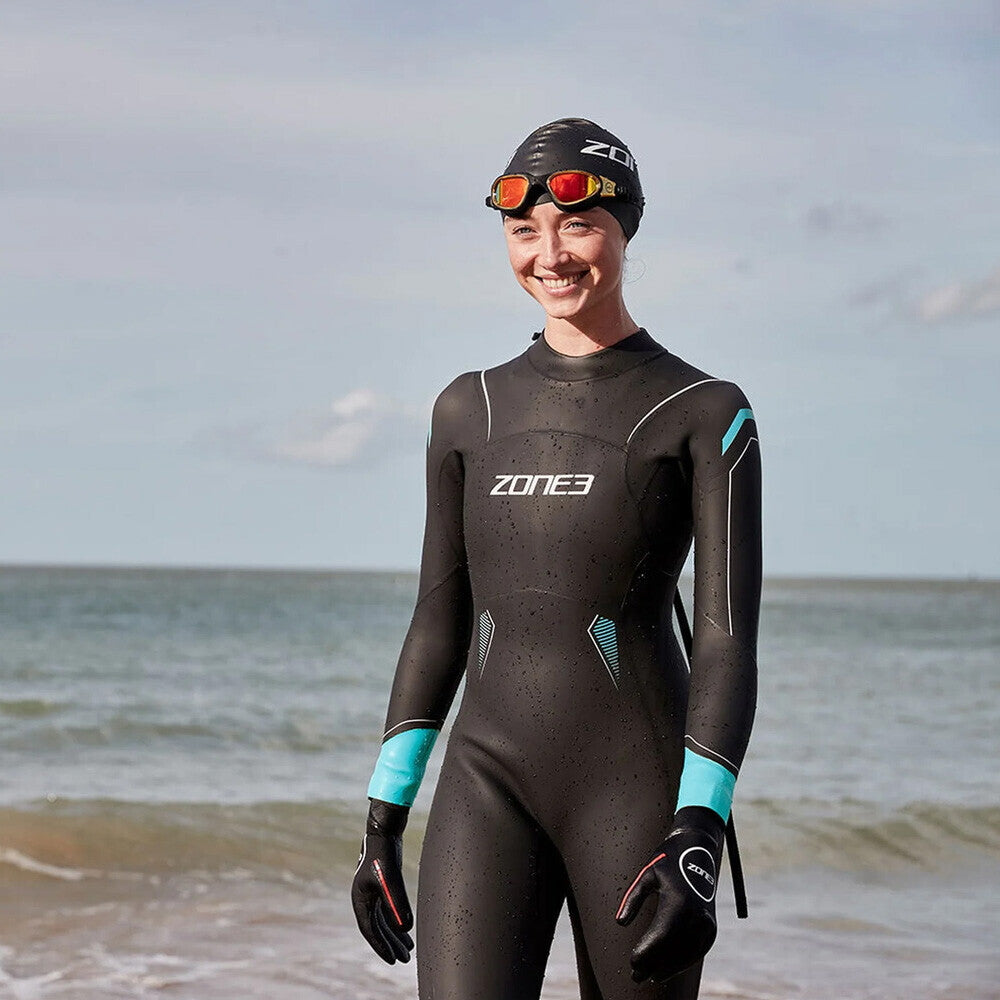Wer vor nicht allzu langer Zeit ein neues Rad gekauft hat, oder sich zumindest damit beschäftigt, dem sind sicher die Begriffe Stack und Reach aufgefallen, die seit ein paar Jahren Verwendung finden, und die Rahmengröße als Auswahlkriterium abgelöst haben. Für all diejenigen, die mit diesen Begriffen noch nichts anfangen können, möchten wir hier erklären worum es sich handelt, und warum die klassische Rahmengröße kein sinnvolles Instrument im Bikefitting ist.
Definition
Stack und Reach haben als Ausgangspunkt die Mitte des Tretlagers. Stack ist der vertikale Abstand dessen bis zur Oberkante des Steuerrohres, also vereinfacht ausgedrückt die Höhe des Lenkers.
Reach ist der horizontale Abstand der Tretlagermitte bis zur Oberkante des Steuerrohres, also die Länge des Rades.
Warum die neue Methode?
Der Fahrer eines Rades hat drei Kontaktpunkte zu seinem Rad. Das sind die Pedale (daher die Tretlagermitte), der Sattel und der Lenker. Jeder Fahrer hat aus biomechanischer Hinsicht eine optimale Sitzposition, welche die Sattelposition in Relation zum Tretlager festlegt. Für das Rennrad ist einigen sicher die Faustformel bekannt, nach der bei waagrechter Pedalstellung ein Lot durch das Knie auch durch die Pedalachse gehen soll. Beim Zeitfahr- bzw. Triathlonbike wird der Fahrer um das Tretlager nach vorne rotiert. Ohne diese Rotation wird der Hüftwinkel spitzer (enger), d.h. Atmung wird negativ beeinflusst, Muskulatur stark gedehnt und Effektivität verringert. Zudem erschwert es den Wechsel zum Laufen durch die stärker beanspruchte Muskulatur. Die Sattel / Tretlager Position ist also anders als beim Rennrad, aber in beiden Fällen ist diese Position fix und soll / kann auf ein neues Rad übertragen werden.
Das bedeutet, dass zwei der drei Kontaktpunkte des Fahrers zum Rad nicht verändert werden. Der dritte Kontaktpunkt, also der Lenker, entscheidet jetzt maßgeblich über die Position des Fahrers, und ist genau deswegen so wichtig. Räder mit viel Stack und wenig Reach sind also höher und kürzer, und somit die Position des Fahrers aufrechter, während wenig Stack und viel Reach eine sehr gestreckte und gebeugte Position verspricht.
Long & Low oder Short & Tall?
Dan Empfield, vom Triathlon Forum Slowtwitch.com beispielsweise, unterteilt Räder in zwei Kategorien: „Long&Low“, für Fahrer mit langem Torso oder dem Wunsch nach sehr extremen Positionen. „Short&Tall“ dagegen ist für Fahrer mit kurzem Torso, verhältnismäßig langen Beinen, oder gerade auch für die, deren Muskulatur nicht dehnfähig genug ist um extremere Positionen zu fahren. Somit dürfte es unter Agegroupern deutlich mehr „Short&Tall“ Kandidaten geben, als dies ein Blick in die Wechselzone oft vermuten lässt.
Natürlich versuchen auch immer mehr Bike Hersteller einen ausgewogenen Mittelweg zwischen „Long&Low“ und “Short&Tall“ zu finden, um eine Geometrie anzubieten, die vielen potenziellen Kunden passt. Viele Bikes die der Gattung „Long&Low“ angehörten, wurden in den letzten Jahren etwas entschärft, um sie auch Fahrern mit gemäßigter Position zugänglich zu machen, wobei mit entsprechendem Spacer bzw. Lenker Setup immer noch sehr aggressive Haltungen möglich sind. Speziell bei Triathlonbikes ist gerade der Lenker ohnehin ein wichtiges Bauteil zur Feinabstimmung, und kann, so er denn die nötigen Einstellmöglichkeiten bietet, einen großen Anpassungsspielraum bieten.
Aussagekriterium über Position und Fahrertyp
Über die Maße Stack und Reach lässt sich also recht schnell einschätzen, ob ein Bike eine eher gemäßigte oder eine extremere Position zulassen wird, bzw., zu welchem Fahrertyp das Rad passt. Viele Internetseiten und Magazine veröffentlichen mittlerweile auch Grafiken welche Stack & Reach Daten von Rädern übersichtlich zeigen oder vergleichen, sodass man sich hier einen schnellen und einfachen Überblick verschaffen kann.
Was ist die Rahmengröße?
Die Rahmengröße ist im Grunde genommen nichts anderes als die Länge des Sattelrohres, und damit für ein Bikefitting an Irrelevanz kaum zu übertreffen. Dazu kommt das viele Rahmenhersteller in Ihren Messungen abweichen.
Während einer das Sattelrohr bis zur Oberkante misst, so misst ein anderer evtl. nur bis zur Schnittstelle mit dem Oberrohr. Damit können zwei Rahmen absolut gleich groß sein, obwohl sie mit völlig anderen Rahmengrößen angegeben werden. Noch deutlicher wird dies bei Sloping Rahmen, also Rahmen mit abfallendem Oberrohr. Und wenn ein Hersteller die Größe ohnehin nur mit S / M / L / XL angibt, dann ist sowieso klar, dass die Rahmengröße keinerlei Bedeutung mehr hat. Der einzige Unterschied ist dann, wie weit die Sattelstütze in den Rahmen eingesteckt sein muss, und ob die nun drei Zentimeter mehr oder weniger im Rahmen steckt, ist für ein Fitting völlig egal.
Oberrohrlänge, Sitzwinkel & Co
Sitzwinkel und Oberrohrlänge können durchaus Aussagekraft besitzen, sind aber nur im Gesamtpaket aller Geometriedaten sinnvoll. Ein Beispiel: Die Räder in der folgenden Grafik sind in Sachen Stack und Reach völlig identisch, unterscheiden sich aber in Oberrohrlänge und Sitzwinkel.
Wenn der Unterschied des Sitzwinkels nicht zu groß ist, kann er aber durch ein Verschieben des Sattels ausgeglichen werden.
Zwei Räder mit gleicher Oberrohrlänge können daher komplett unterschiedlich sein, wenn der Sitzwinkel anders ist. Beurteilt man ein Rad nach der Oberrohrlänge, so sollte man die anderen Maße stets mit berücksichtigen. Gerade bei kleinen Rahmenhöhen ist es oft so, dass die Oberrohrlängen durch steilere Sitzwinkel verkürzt werden, allerdings, ohne dass sich an Stack und Reach etwas ändert. So sind oftmals zwei kleine Rahmen eines Herstellers trotz unterschiedlicher Rahmengröße effektiv gleich groß.
Auch die Steuerrohrlänge kann trügerisch sein, da sie nur dann ein verlässliches Maß ist, wenn sich die Einbaulänge der Gabel nicht unterscheidet. Ist die Gabel aber konstruktionsbedingt etwas kürzer oder länger, so verändert sie auch die Steuerrohrlänge, ohne den Stack zu beeinflussen.
Bikefitting
Dass ein professionelles Bikefitting absolut empfehlenswert ist, das dürfte mittlerweile jedem klar sein. Es verbessert nicht nur die Position, sondern sorgt damit dafür, dass der Fahrer seine Muskulatur effektiver einsetzen kann, und somit auch mehr leisten kann. Allerdings sollte man sich überlegen, ob man „erst“ mit dem bereits gekauften Rad zum Fitting geht, oder ob man das Fitting bereits vor dem Kauf macht (mit einem Fitting-Bike welche Systeme z.B. von Retül, Guru, Shimano, Trek … anbieten), um festzustellen, welches Bikemodell überhaupt zu einem passt (oder ob das Wunschmodell, das man im Auge hat, zu einem passt). Denn ist das falsche Rad erst mal gekauft, dann kann man es im schlimmsten Fall nur noch notdürftig anpassen (Stichwort Spacertürme). Und wer mal ein perfekt passendes Rad gefahren hat, der wird sich mit weniger nicht mehr zufriedengeben.
Ein Dank geht an Cervélo für die Erlaubnis die Grafiken von www.cervelo.com zu nutzen.





















1 Kommentar
Andreas
danke für eure erklärung